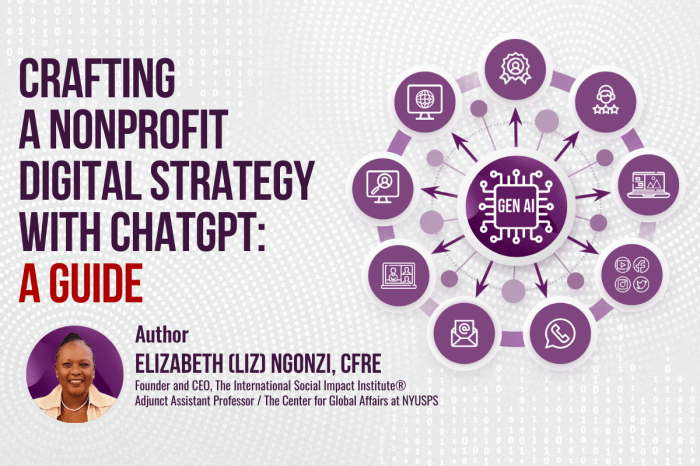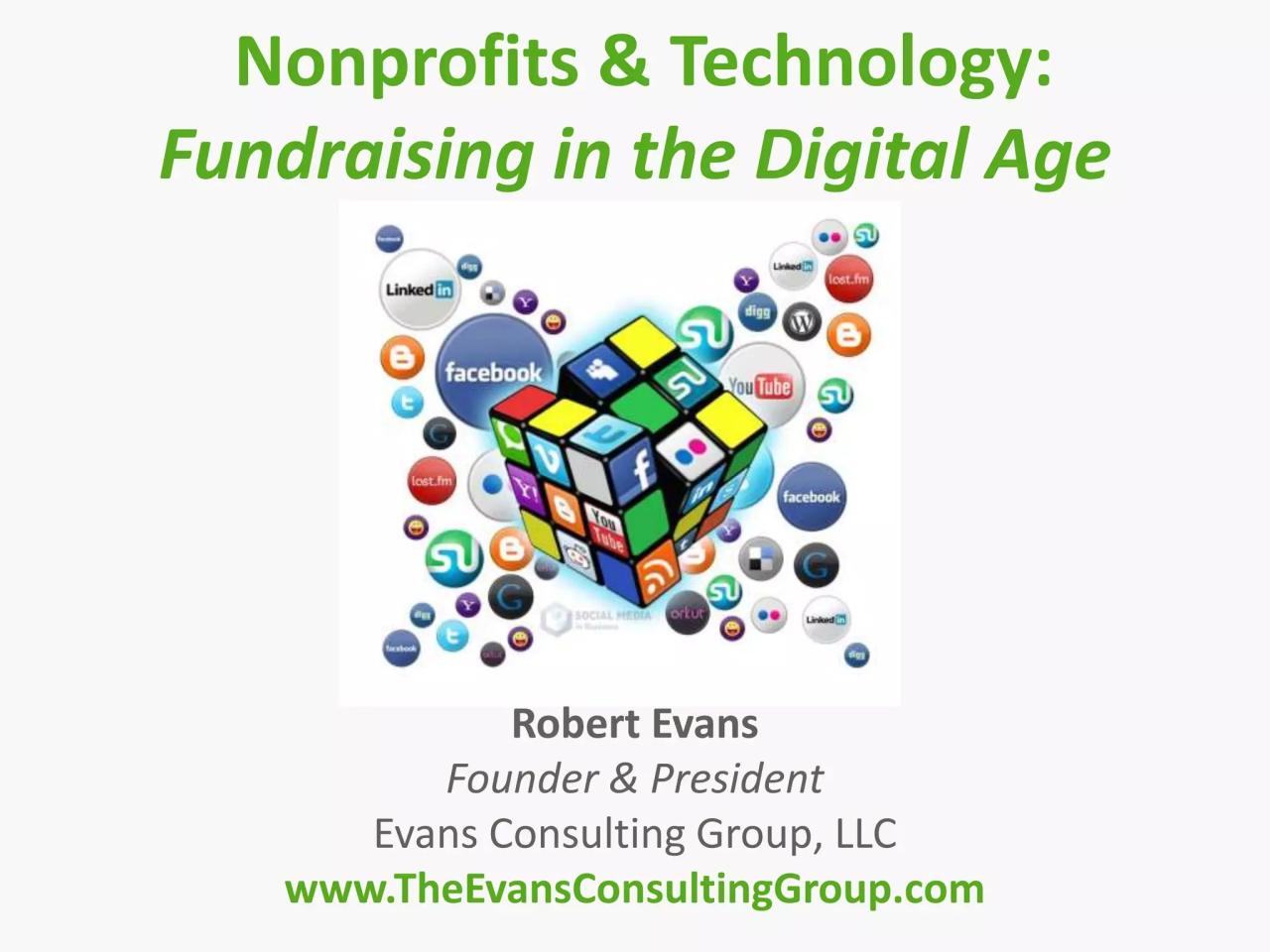
Embark on a journey into the realm of Building a Scalable Tech Strategy for Nonprofits in the Digital Age, where innovation meets impact. This topic delves into the vital role of technology in enhancing nonprofit operations and the benefits of a scalable tech strategy.
Exploring the specific tech needs of nonprofits, the strategies for budgeting tech investments, and the steps to implement scalable solutions will be enlightening. Stay tuned for insights on training staff and volunteers on new technologies for organizational growth.
Importance of a Tech Strategy for Nonprofits

In today's digital age, having a robust tech strategy is crucial for nonprofits to effectively carry out their mission and maximize their impact. Leveraging technology can streamline operations, enhance communication with stakeholders, and improve overall efficiency.
Enhancing Nonprofit Operations with Technology
- Automation: Implementing tools like customer relationship management (CRM) systems and project management software can automate repetitive tasks, allowing nonprofit staff to focus on more strategic initiatives.
- Data Management: Utilizing data analytics tools can help nonprofits make data-driven decisions, track outcomes, and measure impact more accurately.
- Online Fundraising: Platforms for online donations and crowdfunding campaigns enable nonprofits to reach a wider audience and secure funding more efficiently.
- Virtual Collaboration: With video conferencing and collaboration tools, nonprofit teams can work together seamlessly, regardless of geographic locations.
Benefits of a Scalable Tech Strategy for Nonprofits
- Scalability: A well-planned tech strategy can grow and adapt as the nonprofit expands, ensuring that technology continues to support organizational goals.
- Cost Efficiency: Investing in the right technology solutions can save nonprofits time and money in the long run by increasing productivity and reducing manual work.
- Impact Measurement: Technology allows nonprofits to track and analyze metrics related to their programs and services, providing valuable insights for continuous improvement.
- Engagement and Outreach: Through social media, email marketing, and other digital tools, nonprofits can engage with donors, volunteers, and beneficiaries more effectively, building stronger relationships.
Assessing Technological Needs
When it comes to assessing the technological needs of a nonprofit organization, it is crucial to take a systematic approach to ensure that the solutions implemented are aligned with the organization's goals and objectives.
Methods for Identifying Specific Tech Needs
One method for identifying specific tech needs is to conduct a thorough assessment of the organization's current processes and workflows. This can help pinpoint areas where technology can streamline operations and improve efficiency. Additionally, seeking input from staff members at all levels can provide valuable insights into the tools and systems that would be most beneficial.
Types of Technologies for Nonprofits
- Cloud Computing: This technology allows nonprofits to store and access data remotely, enabling collaboration and accessibility from anywhere.
- Customer Relationship Management (CRM) Systems: CRM systems help nonprofits manage donor relationships, track interactions, and personalize communications.
- Data Analytics Tools: These tools enable nonprofits to analyze data, identify trends, and make data-driven decisions to improve outcomes.
Key Factors to Consider
- Scalability: Ensure that the chosen technologies can grow with the organization and adapt to changing needs over time.
- Cost: Consider the initial investment, as well as ongoing maintenance and training costs, to ensure the technology is sustainable for the organization.
- User-Friendliness: Choose technologies that are intuitive and easy for staff members to learn and use effectively.
Budgeting and Resource Allocation
When it comes to budgeting and resource allocation for tech investments in nonprofits, it is crucial to carefully plan and strategize to ensure the most efficient use of funds. Balancing cost-effectiveness with quality is key to maximizing the impact of technology initiatives.
Strategies for Budgeting Tech Investments
- Conduct a thorough assessment of current tech infrastructure and identify areas that need improvement.
- Set clear goals and objectives for tech investments to align with the organization's mission and long-term strategy.
- Research and compare different tech solutions to find the most cost-effective options without compromising quality.
- Allocate a specific budget for tech investments and establish a timeline for implementation.
Tips for Allocating Resources Efficiently
- Prioritize tech projects based on their impact on the organization's mission and goals.
- Consider the long-term sustainability of tech investments and choose solutions that can grow with the organization.
- Involve key stakeholders in the decision-making process to ensure buy-in and support for tech initiatives.
- Regularly monitor and evaluate the performance of tech investments to make adjustments as needed.
Balancing Cost-Effectiveness with Quality
It is important to strike a balance between cost-effectiveness and quality when budgeting for tech in nonprofits. While it may be tempting to opt for the cheapest solution available, it is essential to consider the long-term impact and sustainability of the investment.
Investing in quality tech solutions may require a higher initial cost but can result in greater efficiency and effectiveness in the long run.
Implementing Scalable Solutions
When it comes to implementing a scalable tech strategy for nonprofits, there are several key steps involved that organizations need to consider. From selecting the right technology solutions to training staff and ensuring ongoing support, the process requires careful planning and execution.
Key Steps in Implementing a Scalable Tech Strategy
- Assess Current Infrastructure: Conduct a thorough evaluation of your existing technology infrastructure to identify areas that need improvement or upgrading.
- Identify Scalable Solutions: Research and select technology solutions that can grow with your organization and adapt to changing needs over time.
- Develop a Implementation Plan: Create a detailed plan outlining the steps, timeline, and resources needed to implement the new technology solutions effectively.
- Provide Training and Support: Ensure that staff members receive adequate training on the new technology and offer ongoing support to address any issues that may arise.
- Monitor and Evaluate: Continuously monitor the performance of the tech solutions and gather feedback from users to make necessary adjustments for optimization.
Examples of Successful Tech Implementations in Nonprofit Organizations
One notable example of a successful tech implementation in a nonprofit organization is the use of cloud-based CRM systems to centralize donor information and improve communication strategies. Another example is the adoption of mobile fundraising platforms to reach a wider audience and increase donation opportunities.
Challenges Nonprofits May Face
- Limited Budget: Nonprofits often operate on tight budgets, making it challenging to invest in scalable technology solutions that may have higher upfront costs.
- Resistance to Change: Staff members may be resistant to adopting new technology, which can hinder the implementation process and impact overall effectiveness.
- Data Security Concerns: Nonprofits deal with sensitive donor information, so ensuring data security and compliance with regulations can be a significant challenge.
Training and Capacity Building
Training staff and volunteers on new technologies is crucial for the successful implementation of a scalable tech strategy in nonprofits. Capacity building initiatives play a key role in ensuring that the organization has the necessary skills and knowledge to leverage technology effectively.
Let's explore some strategies and examples in this regard.
Strategies for Training Staff and Volunteers
- Provide hands-on training sessions to familiarize staff and volunteers with new technology tools and platforms.
- Offer online courses or webinars to allow flexibility in learning and upskilling.
- Encourage peer-to-peer learning and knowledge sharing within the organization.
- Partner with tech experts or consultants to conduct specialized training sessions tailored to the organization's needs.
Importance of Capacity Building
Capacity building is essential to equip staff and volunteers with the skills and knowledge needed to effectively utilize technology for the organization's goals. It ensures that the nonprofit is prepared to adapt to changing technological landscapes and stay competitive in the digital age.
Examples of Successful Capacity Building Initiatives
- Creating a digital literacy program to train staff and volunteers on basic computer skills and software applications.
- Establishing a mentorship program where experienced team members guide others in adopting new technologies and best practices.
- Collaborating with universities or tech organizations to provide specialized training programs for nonprofit staff.
- Implementing regular workshops and knowledge-sharing sessions to keep the team updated on the latest tech trends and tools.
Final Wrap-Up

In conclusion, Building a Scalable Tech Strategy for Nonprofits in the Digital Age is a critical component for organizational success. By embracing technology effectively, nonprofits can amplify their impact and reach new heights of efficiency and innovation.
Question & Answer Hub
How can technology enhance nonprofit operations?
Technology can streamline processes, improve communication, and expand outreach for nonprofits.
What are key factors to consider when assessing technological requirements for nonprofits?
Factors such as scalability, compatibility, and ease of use should be prioritized in assessing tech needs.
Why is capacity building important in supporting a scalable tech strategy for nonprofits?
Capacity building ensures that staff and volunteers are equipped to effectively utilize new technologies for maximum impact.













